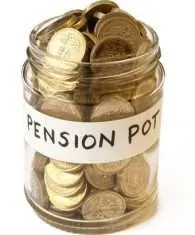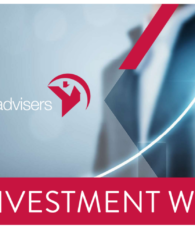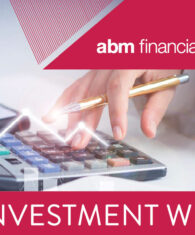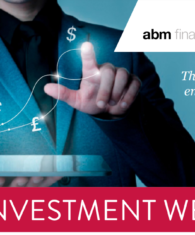Investment Forecast: Overcast, Scattered Showers With Some Sunny Spells – Why Investors Need To Lower Their Expectations
Today’s investment conundrum is how to optimise your pension fund and investments in an era of higher equity valuations, low interest rates and high personal taxes.
If you have met with Eoin or I, you will be familiar with illustrated investments, the BIG Picture, video here. The BIG Picture chart shows that since 1926, an investor who bought the S&P 500 in the US, yielded an average return of almost 10% per annum (before inflation). However, we believe that the future outlook for investors over the next twenty years will be more challenging than the past.
Buoyed by exceptional economic and business conditions, returns on US and Western European equities and bonds during the past 30 years were considerably higher than the long-run trend. Some of these conditions are weakening or even reversing. Analysis by McKinsey & Company [1] suggests that over the next 20 years, total returns including dividends and capital appreciation could be considerably lower than they were in the past three decades, and this will have important repercussions for investors.
- Despite repeated market turbulence, real (after inflation) total returns for equity investors between 1985 and 2014 averaged 7.9 % per annum in both the United States and Western Europe. These were 140 and 300 basis points (1.4 and 3.0 percentage points), respectively, above the 100-year average. Real (after inflation) bond returns in the same period averaged 5.0% per annum in the United States, 330 basis points above the 100-year average, and 5.9% per annum in Europe, 420 basis points above the average.
- A confluence of economic and business trends drove these exceptional returns. They include sharp declines in inflation and interest rates from the unusually high levels of the 1970s and early 1980s; strong global GDP growth, lifted by positive demographics, productivity gains, and rapid growth in China; and even stronger corporate profit growth, reflecting revenue growth from new markets, declining corporate taxes over the period, and advances in automation and global supply chains that contained costs.
- Some of these trends have run their course. The steep decline in inflation and interest rates has ended. GDP growth is likely to be sluggish as labour-force expansion and productivity gains have stalled. While digitisation and disruptive technologies could boost margins of some companies in the future, the big North American and Western European firms that took the largest share of the global profit pool in the past 30 years face new competitive pressures as emerging-market companies expand, technology giants disrupt business models, and platform-enabled smaller rivals compete for customers.
- As a result, investment returns over the next 20 years are likely to fall short of the returns of the 1985– 2014 period. In a slow-growth scenario, total real returns from US equities over the next 20 years, McKinsey & Co suggest could average 4 to 5%—approximately 300 basis points below the 1985–2014 average. Fixed-income real returns could be around 0 to 1% per annum, 400 basis points lower or more. Even in a higher-growth scenario based on resurgent productivity growth, McKinsey & company find that returns may fall below the average of the past 30 years, by 140 to 240 basis points for equities and 300 to 400 basis points for fixed income. Their analysis shows a similar outcome for Europe.
- Most investors today have lived their entire working lives during this golden era, and a long period of lower returns would require painful adjustments for us all.
Your Behavioural Gap
Boston based research company DALBAR are an independent research company which observes investor behaviour. Because we are human and have emotions, as investors we do the opposite to what we should do i.e. we should buy low and sell high. DALBAR’s research shows that the average stock market investor over the twenty years to the end of 2011, earned a return of 3.5% versus the average fund return of 7.8%. Over the next twenty years, are you unwittingly going to leave behind more than half the return available from the stock market?
A concern for us all is that given equity markets are currently in their second longest bull market in history and valuations have moved significantly higher since March 2009, is there validity in the suggestion that equity valuations may have reached ‘bubble’ levels?
Warren Buffet has quipped that the stock market is a device for transferring money from the impatient to the patient.
So, what do you need to do?
Our advice to you is (a) to know what you are invested in (b) why you are investing in such assets (c) have a plan and (d) stick to your plan. While this sounds easy in theory, experience suggests that most investors do not know why they are investing in the assets that they are invested in and don’t stick to their initial plan.
We advise you to read and re-read the financial broker guide to addressing investment risk, view here.
To learn more why not join us at our next complimentary investment breakfast briefing at the Clayton, Lapps Quay, Cork on Wednesday, September 13th, 2017? Our two speakers are Brian Keegan and Alan McIntosh. Brian Keegan is Director of Public Policy and Taxation at Chartered Accountants Ireland. Alan McIntosh, Chief Investment Strategist at Quilter Cheviot of London, is responsible for the €25 Billion of assets under management at Quilter Cheviot. To find out more information, click here.
To book a place at our investment breakfast on September 13th email: sean@abm.ie
Article References:
[1] McKinsey Global Institute, Report of May 2016, Diminishing Returns: Why Investors May Need To Lower Their Expectations












